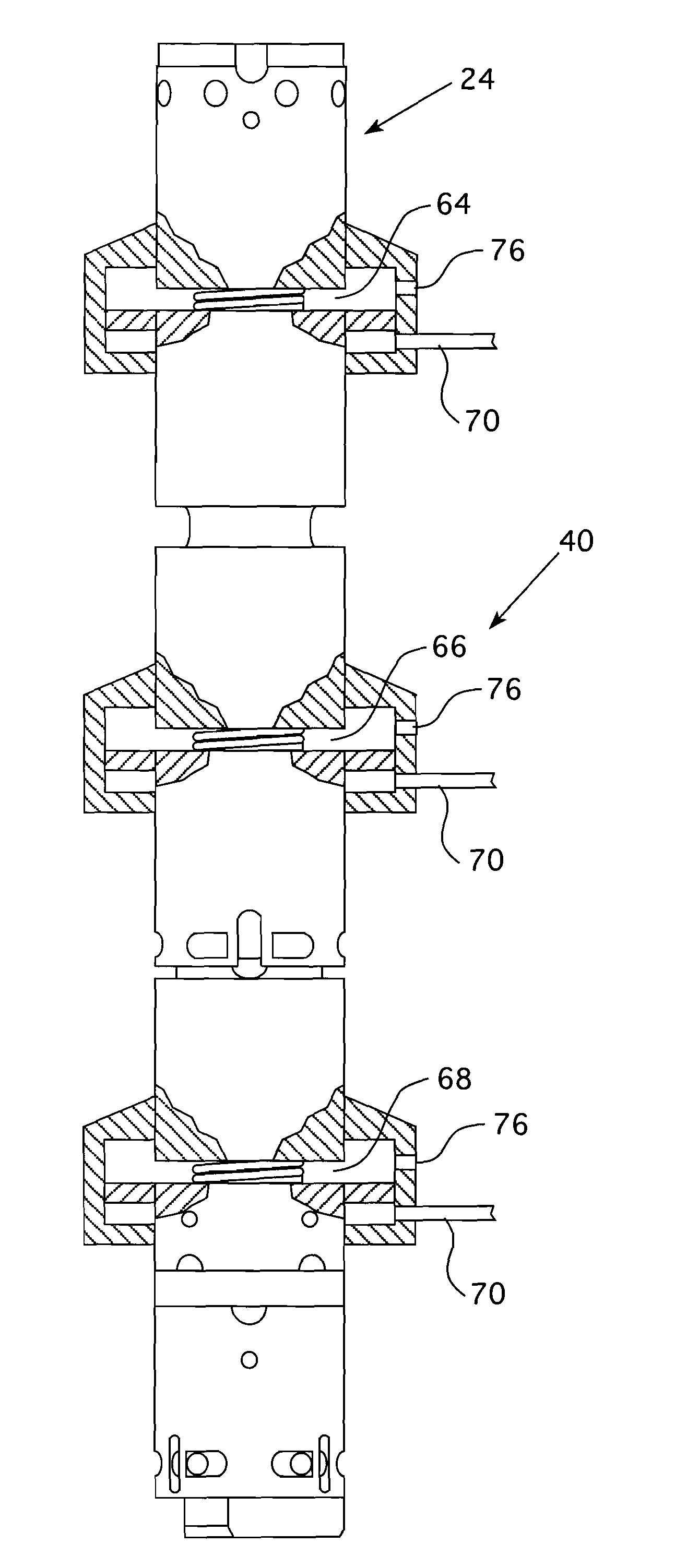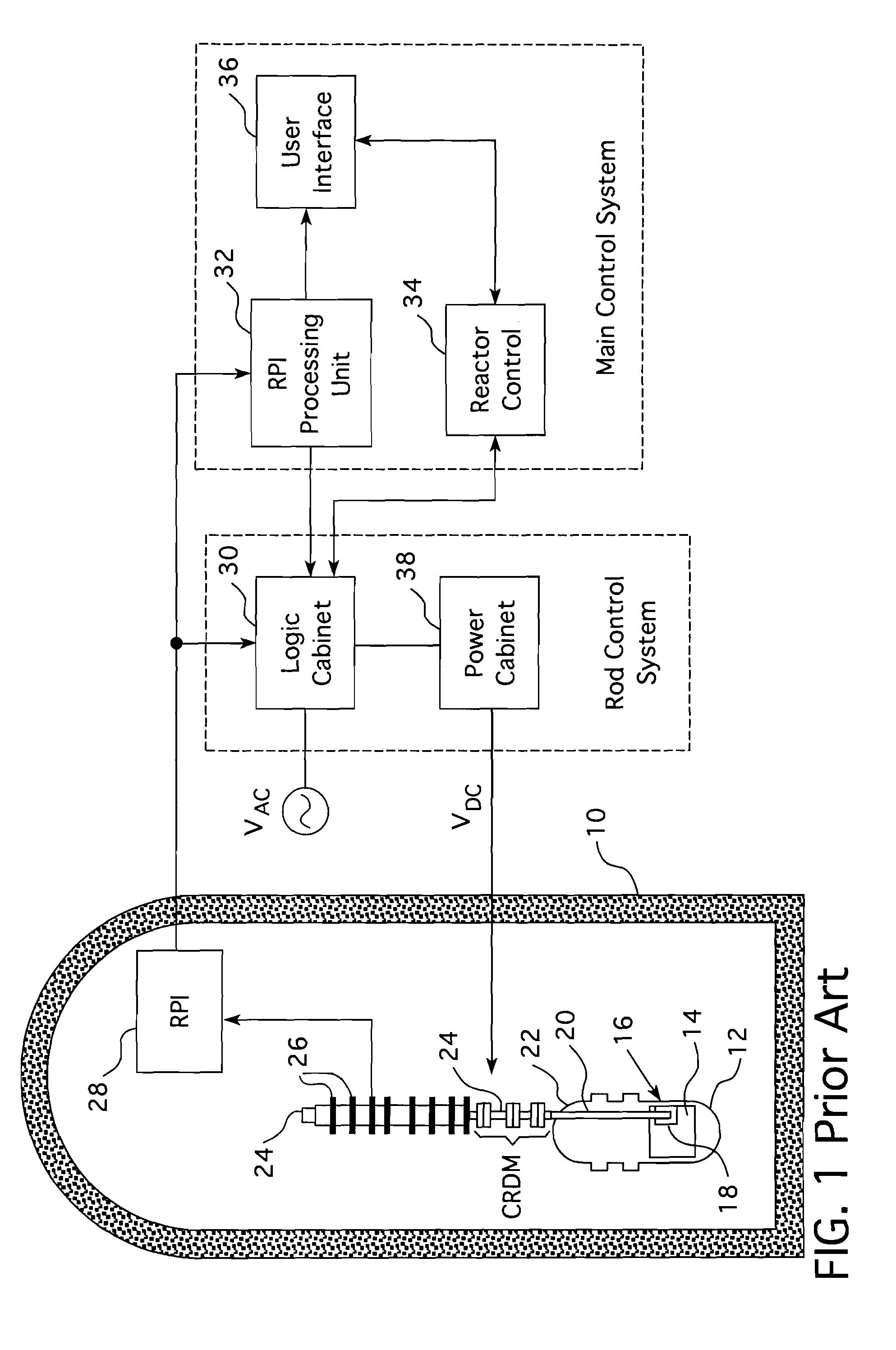Nuclear reactor internal hydraulic control rod drive mechanism assembly
a technology of drive mechanism and nuclear reactor, which is applied in the direction of nuclear reaction control, greenhouse gas reduction, climate sustainability, etc., can solve the problems of increasing the rate of nuclear reaction and core power output, reducing the extent of neutron absorption, and unable to reliably operate conventional arrangement of coils
- Summary
- Abstract
- Description
- Claims
- Application Information
AI Technical Summary
Benefits of technology
Problems solved by technology
Method used
Image
Examples
Embodiment Construction
[0031]As stated in regard to FIG. 1, the control rods are attached in clusters 16, commonly referred to as spider assemblies, with each cluster being commonly driven by a drive rod 20 disposed in a vertical support housing 24 above the reactor core 14 containing the fuel assemblies into which the control rods 18 are advanced or from which the control rods are retracted for variable damping of nuclear flux within the reactor core. The moving parts of the control rod drive mechanism are within the pressure envelope of the reactor and in the conventional designs, the electromagnetic coils (CRDM) for driving the moveable parts are disposed around and about each of the housings 24 that extends above the reactor. In viewing the several figures, it should be appreciated that like reference characters refer to corresponding parts.
[0032]FIG. 4 shows a drive rod drive mechanism 40 with the extended portion of the housing 24 of a traditional reactor partly cut away to show the grippers 42 and ...
PUM
 Login to View More
Login to View More Abstract
Description
Claims
Application Information
 Login to View More
Login to View More - Generate Ideas
- Intellectual Property
- Life Sciences
- Materials
- Tech Scout
- Unparalleled Data Quality
- Higher Quality Content
- 60% Fewer Hallucinations
Browse by: Latest US Patents, China's latest patents, Technical Efficacy Thesaurus, Application Domain, Technology Topic, Popular Technical Reports.
© 2025 PatSnap. All rights reserved.Legal|Privacy policy|Modern Slavery Act Transparency Statement|Sitemap|About US| Contact US: help@patsnap.com



